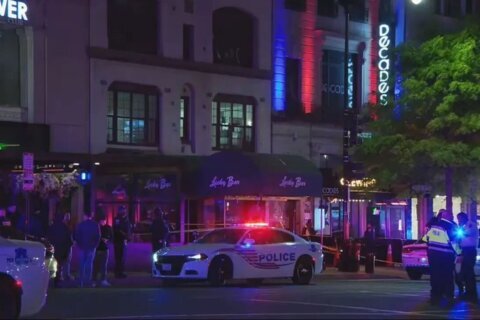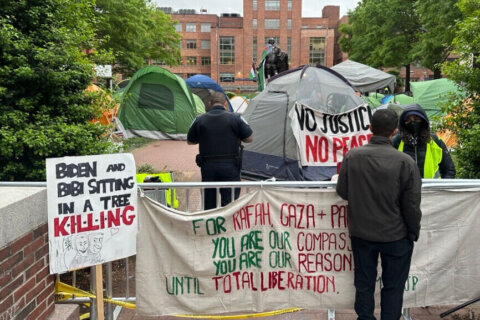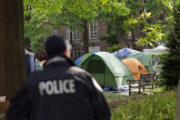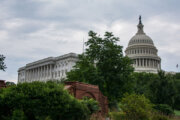D.C. is halfway to completing a $309 million plan to convert its current streetlights from old-style incandescent and high-pressure sodium to LED technology.
At a news conference Monday, Mayor Muriel Bowser celebrated the fact that 40,000 streetlights across the District have already been modernized, and that the change will — under the plan — mean faster replacements when lights go out.
Currently, when a streetlight fails, “It just stays out until someone calls us and tells us it’s out,” said Bowser.
That’s because D.C. relies on calls from members of the public to its 311 call center to report outages. Once calls come in, then the process of arranging for replacements are made.
Under the new public-private partnership, or “P3 plan,” said Sharon Kershbaum, interim director of the Department of Transportation, “We actually have a commitment from our vendor to go out within 24 hours” to fix burned-out lights on the weekdays. On the weekends, said Kershbaum, the follow-up is designed to happen within 48 hours, and in emergencies, as little as four hours.
And instead of relying on the public to call about darkened lights, said Kershbaum, “we’ll know immediately when there’s an outage or something’s down.”
D.C.’s Acting Director of Parks and Recreation Thennie Freeman said she was enthusiastic about the new lighting and its impact for users of the programs at the District’s rec centers.
Many of those residents “will walk to and from our centers. And we’re excited that this new lighting and increased visibility will help make their journeys safer,” said Freeman.
Bowser was asked if there’s data to show whether streetlights have a measurable impact on safety. “I think it’s a generally accepted principal that better-lit areas are safer,” said Bowser.
When it comes to streetlights, some D.C. residents say bright lighting can be too much of a good thing.
Delores Bushong, who lives in Northeast D.C. and served on the Streetlight Advisory Panel, mentioned BUG ratings — which take into account where and how the light is directed. Backlight, uplight or glare is produced by many lights unless adjustments, including shields, are installed to redirect the light.
“Glare is a huge issue for many of us,” Bushong said.
Bushong said the issue of making sure that outdoor streetlights don’t create invasive glare into residents’ homes remains an issue.
“We’re concerned about shields. We were promised that there would be shields if light was trespassing in people’s homes,” said Bushong.
When asked about the issue, Bowser said LED technology has improved.
“I think when we started talking about this there was one level, and that was bright,” said Bowser.
Bushong was also concerned that information on the light levels coming from D.C.’s streetlights, previously available online, was no longer accessible to the public.
Kershbaum replied, saying, “During the installation period and while we’re doing the conversion” that information is not posted online. “But once we’re up and running, you’ll see the same level of information” as before.
The new LED technology is supposed to eliminate 38,000 tons of greenhouse gas emissions and cut energy use by 50%.
The District has partnered with Plenary Infrastructure DC to complete the work by 2025.
D.C.’s Ward 7 has the highest completion rate of LED streetlight installation, with 84% finished. Wards 1 and 2 are, according to Bowser, “where we have the most work remaining.”








